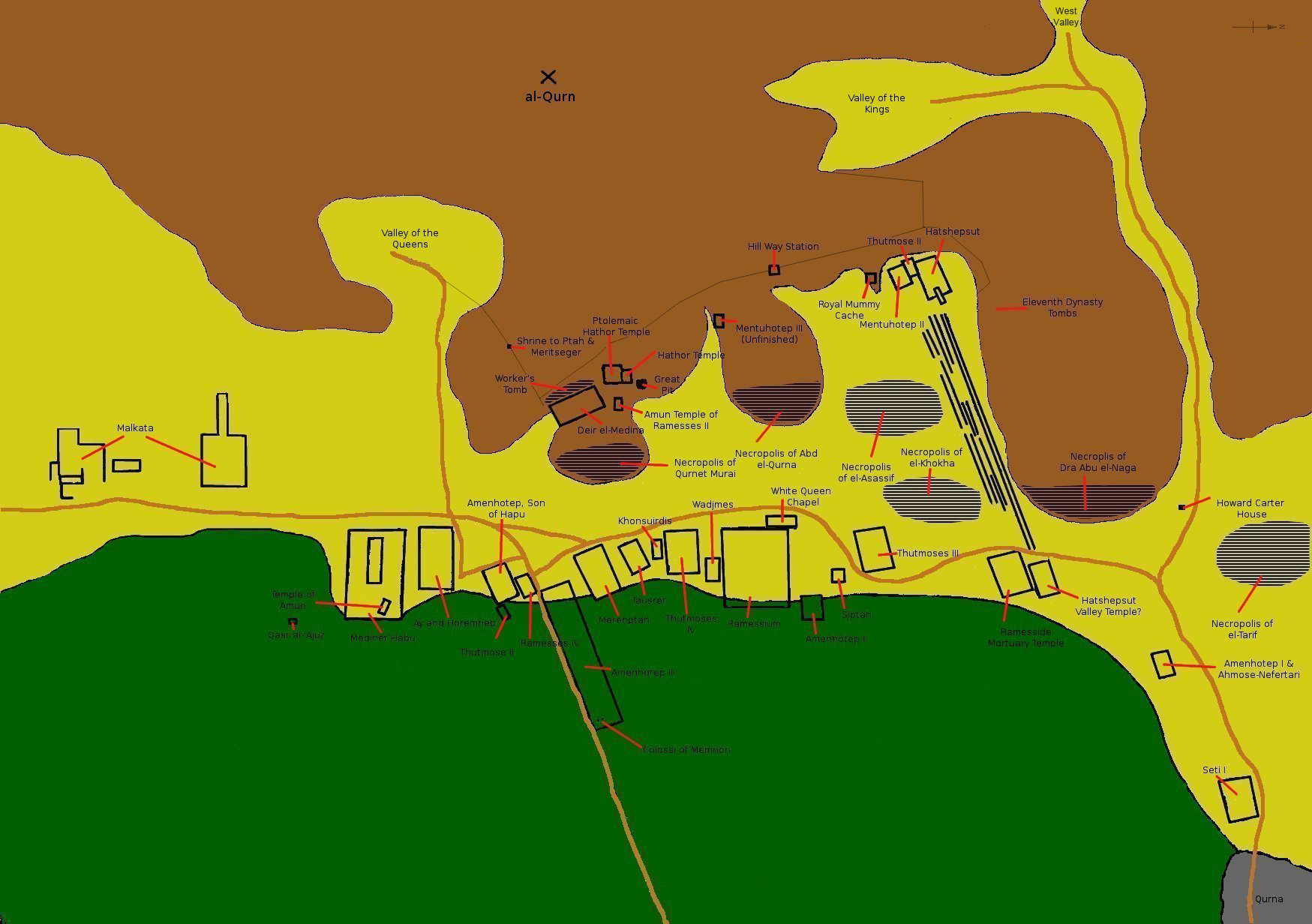|
Panehsy (TT16)
The ancient Egyptian Panehsy was ''Prophet of Amenhotep (I) of the Forecourt'', during the reign of Ramesses II. Panehsy was buried in a tomb, TT16, in the Dra' Abu el-Naga' area of the Theban Necropolis The Theban Necropolis is a necropolis on the west bank of the Nile, opposite Thebes (Luxor) in Upper Egypt. It was used for ritual burials for much of the Pharaonic period, especially during the New Kingdom. Mortuary temples * Deir el-Bahri .... References Nineteenth Dynasty of Egypt {{AncientEgypt-bio-stub ... [...More Info...] [...Related Items...] OR: [Wikipedia] [Google] [Baidu] |
Ramesses II
Ramesses II ( egy, rꜥ-ms-sw ''Rīʿa-məsī-sū'', , meaning "Ra is the one who bore him"; ), commonly known as Ramesses the Great, was the third pharaoh of the Nineteenth Dynasty of Egypt. Along with Thutmose III he is often regarded as the greatest, most celebrated, and most powerful pharaoh of the New Kingdom, itself the most powerful period of Ancient Egypt. The name ''Ramesses'' is pronounced variously . Other spellings include Rameses and Ramses; in grc-koi, Ῥαμέσσης, Rhaméssēs. He is known as Ozymandias in Greek sources ( grc-koi, Ὀσυμανδύας, translit=Osymandýas), from the first part of Ramesses's regnal name, , "The Maat of Ra is powerful, Chosen of Ra". His successors and later Egyptians called him the "Great Ancestor". At age fourteen, he was appointed prince regent by his father, Seti I. Most Egyptologists today believe he assumed the throne on 31 May 1279 BC, based on his known accession date of III Season of the Harvest, day ... [...More Info...] [...Related Items...] OR: [Wikipedia] [Google] [Baidu] |
TT16
The Theban Tomb TT16 is located in Dra' Abu el-Naga', part of the Theban Necropolis, on the west bank of the Nile, opposite to Luxor. It is the burial place of the ancient Egyptian Panehsy, who was ''Prophet of Amenhotep (I) of the Forecourt'', during the reign of Ramesses II. Panehesy's wife is named Ternute (or Tarennu). A brother of Panehesy by the name of Pahesy appears in a scene with the procession of a vase of Amun.K.A. Kitchen, Ramesside inscriptions, Vol 3: Translated and annotated. Notes and comments, 2000 The tomb is rather roughly hewn from the rock, and the decoration is poor. A scene of the barque of Amenhotep I has been almost totally destroyed, but other scenes showing Panehsy and his wife standing before Osiris are preserved. See also * List of Theban tombs * N. de Garis Davies The Egyptologists Nina M. Davies (6 January 1881 – 21 April 1965) and Norman de Garis Davies (1865–5 November 1941) were a married couple of illustrators and copyists who worked i ... [...More Info...] [...Related Items...] OR: [Wikipedia] [Google] [Baidu] |
Dra' Abu El-Naga'
The necropolis of Draʻ Abu el-Naga' ( ar, دراع ابو النجا) is located on the West Bank of the Nile at Thebes, Egypt, just by the entrance of the dry bay that leads up to Deir el-Bahari and north of the necropolis of el-Assasif. The necropolis is located near the Valley of the Kings. History According to the German Institute of Archeology or DAI, "Dra' Abu el-Naga is one of the longest occupied necropolis of Ancient Egypt: it was used as a burial place almost continuously between the Middle Kingdom and the early Christian (Coptic) periods, i.e. a period of ca. 2500 years. The oldest graves documented so far date to the end of the 11th dynasty (ca. 2000 B.C.). During the Seventeenth Dynasty and early 18th dynasty, kings and their wives were interred here. The social spectrum of the private necropolis ranges from simple burials with few grave goods to the burials of higher-ranking individuals e.g. the High Priests of Amun of Karnak and other high officials. In the ear ... [...More Info...] [...Related Items...] OR: [Wikipedia] [Google] [Baidu] |
Theban Necropolis
The Theban Necropolis is a necropolis on the west bank of the Nile, opposite Thebes ( Luxor) in Upper Egypt. It was used for ritual burials for much of the Pharaonic period, especially during the New Kingdom. Mortuary temples * Deir el-Bahri ** Mortuary temple of Hatshepsut ** Mortuary temple of Mentuhotep II ** Mortuary temple of Thutmose III * Medinet Habu ** Mortuary temple and palace of Ramesses III ** Mortuary Temple of Ay & Horemheb * Mortuary Temple of Amenhotep III ** Colossi of Memnon * Mortuary Temple of Merneptah * Mortuary Temple of Ramesses IV * Mortuary Temple of Thutmose IV * Mortuary Temple of Thutmose III * Mortuary Temple of Twosret * Temple of Nebwenenef * Qurna ** Mortuary Temple of Seti I * Mortuary Temple of Amenhotep II * Ramesseum (Mortuary Temple of Ramesses II) Royal Necropolis * Valley of the Kings (Modern: "''Wadi el-Muluk''") * Valley of the Queens (Modern: "''Biban el-Harim''") * Royal Cache * Bab el-Gasus Necropolis * Deir el-Med ... [...More Info...] [...Related Items...] OR: [Wikipedia] [Google] [Baidu] |


